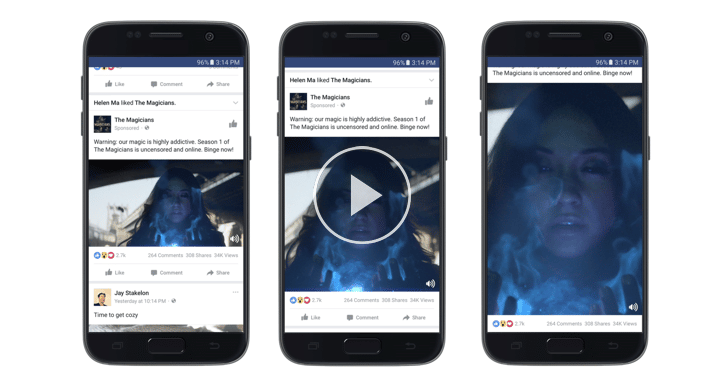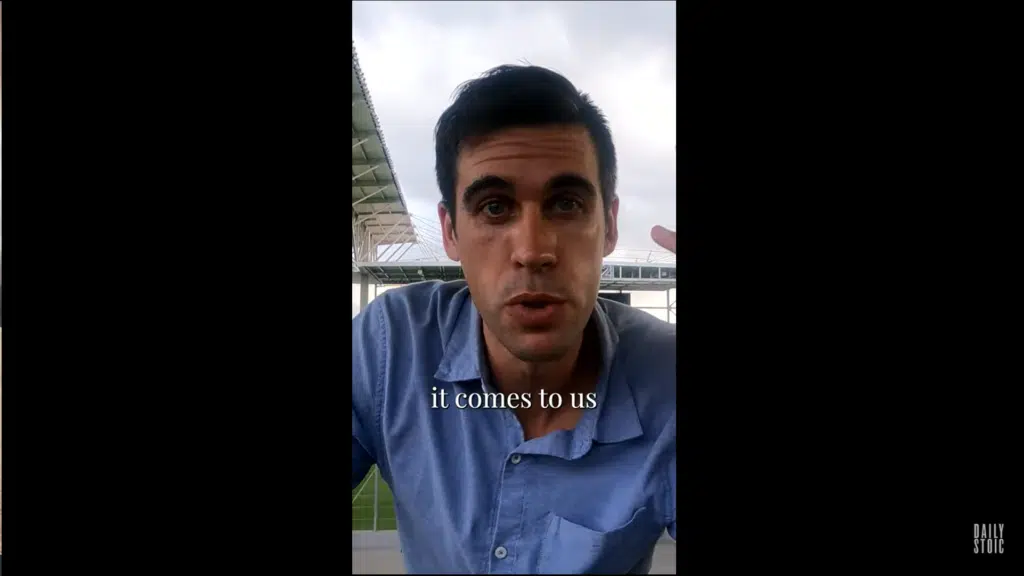Vertical video went from an unforgivable sin to the industry standard practically overnight. Now, it’s universally recognized as the best format for social media. If you’re making ads or business videos, getting the vertical video dimensions right is essential. People don’t want to rotate their phones to watch a 30 second ad and they won’t watch something that doesn’t fit the platform.
Social media juggernauts like Facebook have embraced vertical video formats in recent years. Even YouTube dabbles in vertical video. The newer generation of social media apps, like Snapchat and Tik Tok, use vertical video almost exclusively. While most platforms now support (and even prefer) vertical video, they each have different standards for vertical video dimensions. Here’s everything you must know to make vertical videos that fit the most popular social media platforms.
Vertical Video Dimensions and Aspect Ratios
Before we get to specific social media platforms, it might be worth clearing up one potential point of confusion. When we talk about the size of something in the physical world, we talk about its dimensions. You might have an 8×10 inch photograph or a 4×6, for example.
In the digital world, we also talk about dimensions, usually noted in pixels. For example, Facebook requires that videos on their platform be no smaller than 120px by 120px. But we also talk about aspect ratio, that is the relation between the width of an image and its height. You might hear people use dimensions and aspect ratio interchangeably, but professional video creators know the difference.
Using the right dimensions and aspect ratio helps your video display correctly and prevents distortion or clipping. People are more likely to watch a video that seems high quality.
Vertical Video Recording Tips
If you’re recording with a phone, shooting vertical video for social media is easy. Most smartphones automatically record in 9:16 if you hold them vertically. If you’re using a camera, you may need to edit to the correct aspect ratio after the shoot.
You can even shoot in horizontal mode and edit to vertical, but that’s the most difficult option best left to professional videographers and video editing experts. If you do decide to shoot horizontally, make sure you keep the subject of your video in the center of the frame so you can easily cut it down without losing anything important.
Tips for shooting vertical video:
- Avoid too much horizontal movement or fast pans, these seem more intense when the field of view is narrower
- Fill the space, text and other graphics can help fill the taller frame
- Focus on the subject, vertical video is up close and personal, don’t be afraid to zoom in on the details
Of course, if you’re creating an animation, you can set your aspect ratio from the beginning to ensure that your finished video looks exactly as you expect.
Why Go Vertical on Facebook
Facebook hosts a variety of aspect ratios including vertical, landscape and square. Yet vertical in generally the preferred format. When Facebook A/B tested vertical video against square ratio video using the same creative, video length, targeting, budget and bid, they discovered that vertical video resulted in brand lift 70% of the time. Viewers even reported a 3 to 9 point increase in ad recall.
What’s even more interesting is that vertical video changes how users watch ads. In the Facebook test, 70% of video watch time, including video ads, was with the sound on. Typically Facebook mobile viewers prefer muted video. However, full screen vertical video is engaging enough to encourage audio. And Facebook isn’t alone in their findings.
An independent test by Annenberg Media found that vertical video reached 25,000 more people on Facebook, beating both square and horizontal formats. It’s clear that vertical video is great for engagement.
Facebook Vertical Video Guide
Here are the technical specs for Facebook vertical video:
- Facebook feeds: 1289 px on the longest side, with a 4:5 aspect ratio
- Facebook stories: 1080 x 1920 px gives you an aspect ratio of 9:16. You can also use 4:5.
- Video carousel format: 1:1 is recommended. Make sure you keep consistent ratios for all videos in a carousel.
- Audience Network & in-stream video: 9:16.
The important takeaway is that vertical video is supported on both desktop and mobile players. It’s also presented without letter-boxing as long as you choose supported dimensions. The lack of that annoying black border increases engagement rates for vertical video on Facebook.
Instagram Vertical Video Dimensions
Over the last couple of years, Instagram has embraced different kinds of video. In-feed video most often appears in square format while stories and IGTV standard vertical video at 9:16. Instagram Reels use the same dimensions as Stories and can be shared to your feed as well.
When creating video for Instagram, consider where you’ll be sharing the video to decide what aspect ratio is best. If you plan to use your video in both places, make sure to keep your subject vertically centered so you can crop from the top and bottom without losing anything important.
Should You Use Vertical Video On YouTube?
More than half of YouTube views come from mobile devices, so it’s no real surprise to see YouTube is adapting to vertical video. According to YouTube’s A/B test results, vertical ads see a 33% percent lift in brand awareness and a nearly 12% lift in consideration over their horizontal counterparts.
If your viewers are watching on a phone or tablet using the YouTube app, vertical videos will automatically fill the screen. But if they’re watching on a television or desktop computer the format can look a little strange.
Check your Audience metrics on YouTube to decide if vertical video is the right choice for your YouTube channel.
Snapchat Vertical Video Guide
You can’t talk about vertical video without mentioning Snapchat. Horizontal formats do not play well there. News outlets and major media companies like Vice and ESPN, create 10-second vertical video ads that see hundreds of thousands— if not millions of viewers each day. Vertical is the default content format for Snapchat Discover as well.
The standard dimensions of 1080×1920 apply across Snapchat. You want to fill the whole screen, no letterboxes, no weird borders.
TikTok the New Home of Vertical Video
The hottest new social media app, TikTok, is built on vertical video. Use of the TikTok has exploded since 2018, and advertisers have found all kinds of ways to use TikTok for advertising. Brands like Red Bull were the first to jump on the TikTok bandwagon. The audience on TikTok is young, engaged, and always looking for great videos to watch.
Nothing but 1080×1920 will do here. Don’t even try to use horizontal videos, users are likely to scroll on by. You might be able to get away with square if you surround it with strong captions and music.
The Takeaway for Vertical Video Dimensions
If you want to use your video across social media platforms, 1080×1920 should be your go-to video dimensions. They work almost anywhere and allow your content to fill the screen. That increases engagement which leads to vertical video success.








